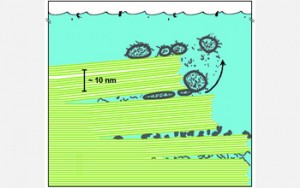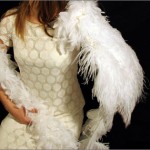It’s all over the place but I couldn’t resist bringing it here too. Helen Hansma at the University of California Santa Barbara has published her ‘between the sheets of mica’ theory for the origins of life in the September 7, 2010 issue of the Journal of Theoretical Biology.
Here’s a video I found at the US National Science Foundation’s (NSF) website (here) of Hansma discussing her theory,
Credit: University of California, Santa Barbara/National Science Foundation
I found more in a news item at Nanowerk,
Hansma’s passion for mica evolved gradually–starting when she began conducting pioneering, NSF-funded research in former husband Paul K. Hansma’s AFM [atomic force microscope] lab to develop techniques for imaging DNA and other biological molecules in the atomic force microscope (AFM)–a high-resolution imaging technique that allows researchers to observe and manipulate molecular and atomic level features.
Says Helen Hansma, “Mica sheets are atomically flat, so we can see DNA molecules on the mica surface without having to cover the DNA with something that makes it look bigger and easier to see. Sometimes we can even see DNA molecules swimming on the surface of mica, under water, in the AFM. Mica sheets are so thin (one nanometer) that there are a million of them in a millimeter-thick piece of mica.”
Hansma’s “life between the sheets” hypothesis first struck her a few years ago, after she and family members had collected some mica from a Connecticut mine. When she put water on a piece of the mica under her dissecting microscope, she noticed a greenish organic ‘crud’ at some step edges in the mica. “It occurred to me that this might be a good place for the origins of life–sheltered within these stacks of sheets that can move up and down in response to flowing water, which could have provided the mechanical energy for making and breaking chemical bonds,” says Hansma.
I’m sure Hansma is quite aware of what the ‘between the sheets’ phrase conjures and it works beautifully with her actual theory. Here’s Hansma’s illustration of what might have happened (from the NSF site),

Diagram of biomolecules between sheets of mica in a primitive ocean. The green lines depict mica sheets and the grey structures depict various ancient biological molecules and fatty vesicles. In the 'between the sheets' mica hypothesis, water may have moved in and out of the spaces between stacks of sheets, thereby forcing the sheets to move up and down. This kind of energy may have ultimately pushed biological molecules and/or fatty acids together to form cells. Credit: Helen Greenwood Hansma, University of California, Santa Barbara
I’m thoroughly charmed.
